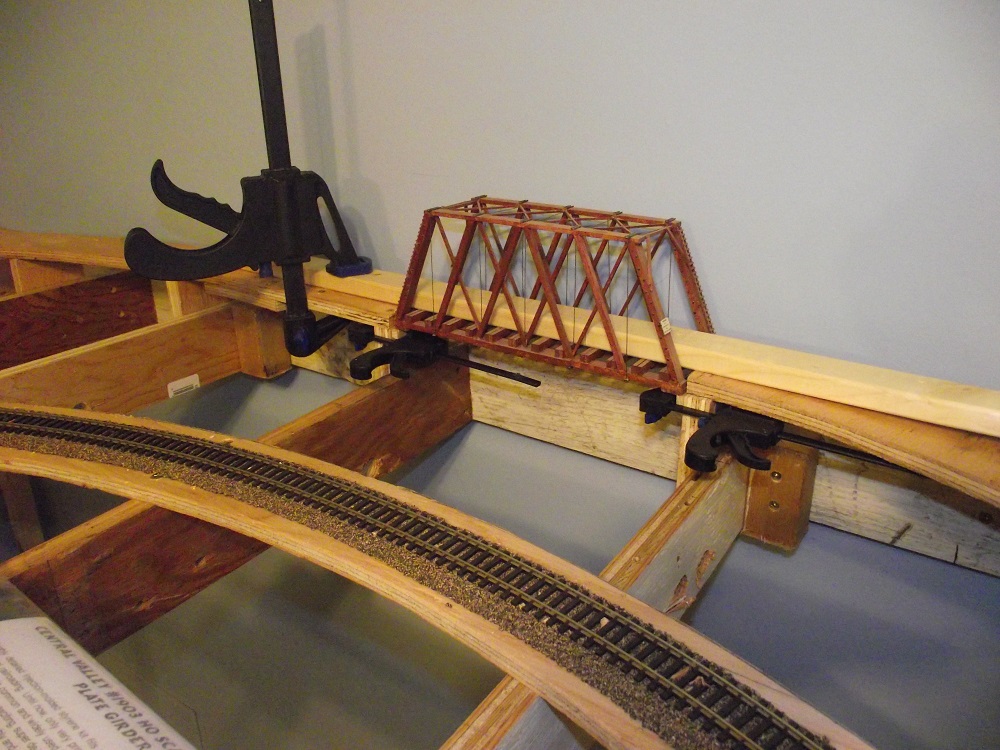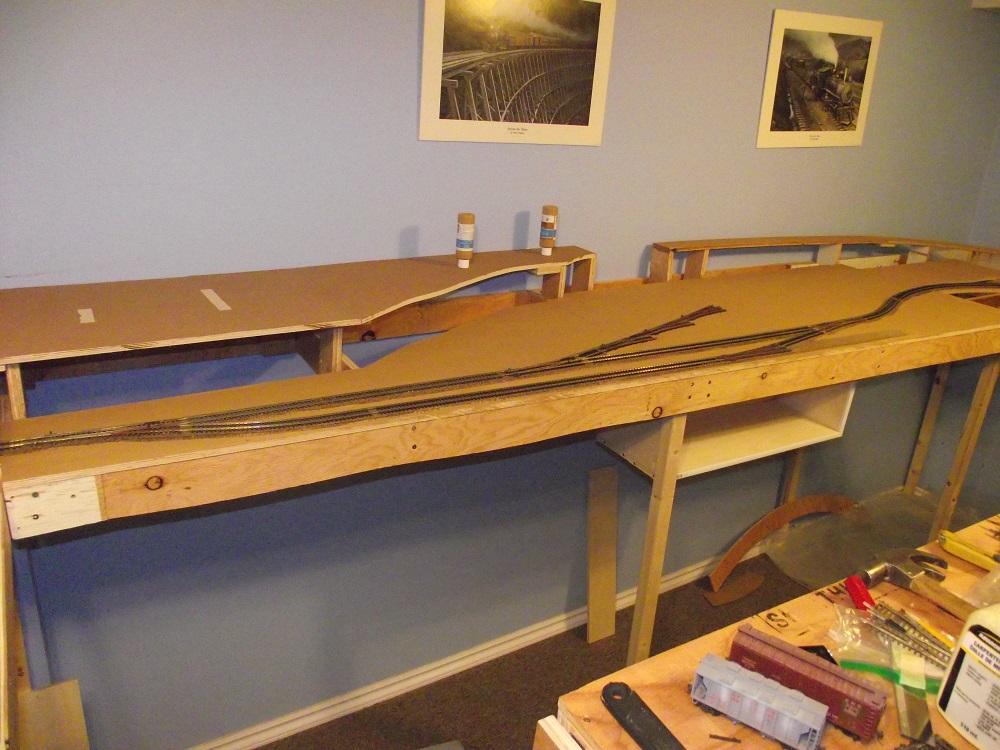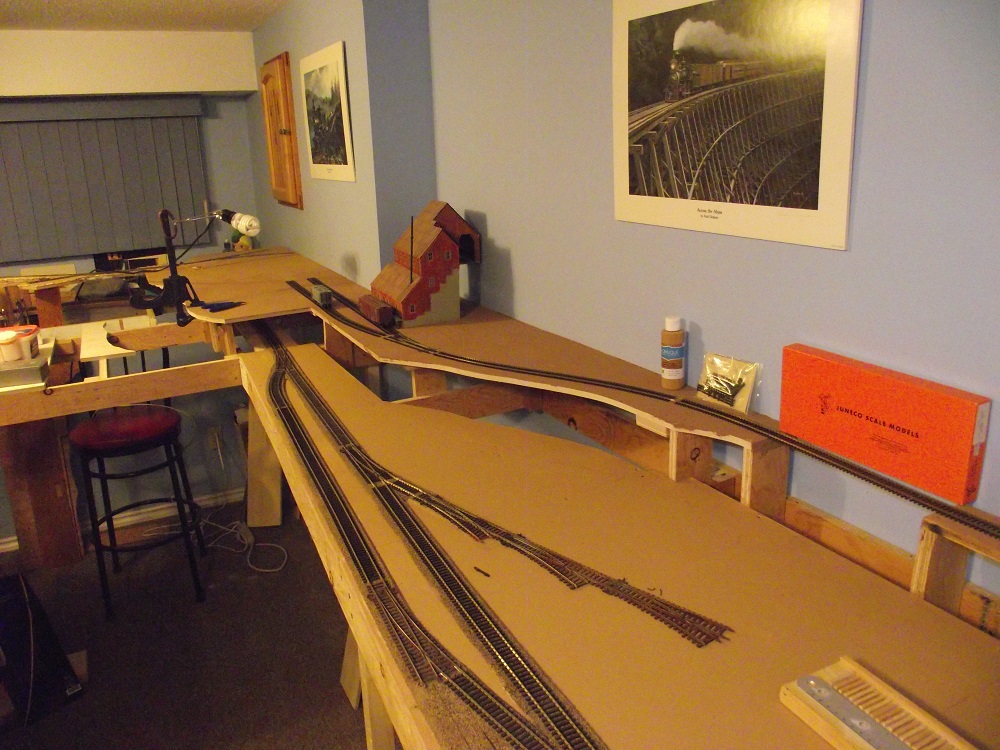11-29-2020, 07:58 PM
Thanks you Mike and Wayne.
I spent a number of hours in the train room yesterday and today. I started with fitting the bridge into the first gap:

I used some 1/4" square basswood to form the abutment/rests for the bridge. The 1X2 is clamped in place to keep the bridge level with the roadbed while everything dries.

Then I started to layout how I wanted the smaller town's yard. At first I wanted three yard tracks, a fourth track heading to an undetermined industry on the far end and a run-around track on that spur. After laying it out I didn't like how much room the run-around track was going to use so I decided to leave it off. I already have the passing siding on the outside to use as a run-around anyway.

After that I figured I should paint the deck before laying track directly on it. I went to the dollar store and picked up several bottles of Water-based Acrylic 'Cashmere Tan' and painted the roadbed of the stamp mill branch, the lower deck and the upper deck to the logging branch. I think it looks allot better now.

When The paint dried overnight I laid the track up to the stamp mill. It's hard to see in this picture but I used Micro-engineering's bridge track in the truss bridge. It still needs a bit of fine tuning but I like the way it looks. The track and bridge it still removable so I won't have to work around them when it comes to scenery.


I ran the track right up to the stamp mill. The track is temporarily laid across where the second bridge will go. I added a turnout for the stamp mill with the second track continuing to the logging area. I haven't figured out the track for that quite yet so it will just stat like this for now.
Next I want to start to put the small town's yard in:

I spent a number of hours in the train room yesterday and today. I started with fitting the bridge into the first gap:
I used some 1/4" square basswood to form the abutment/rests for the bridge. The 1X2 is clamped in place to keep the bridge level with the roadbed while everything dries.
Then I started to layout how I wanted the smaller town's yard. At first I wanted three yard tracks, a fourth track heading to an undetermined industry on the far end and a run-around track on that spur. After laying it out I didn't like how much room the run-around track was going to use so I decided to leave it off. I already have the passing siding on the outside to use as a run-around anyway.
After that I figured I should paint the deck before laying track directly on it. I went to the dollar store and picked up several bottles of Water-based Acrylic 'Cashmere Tan' and painted the roadbed of the stamp mill branch, the lower deck and the upper deck to the logging branch. I think it looks allot better now.
When The paint dried overnight I laid the track up to the stamp mill. It's hard to see in this picture but I used Micro-engineering's bridge track in the truss bridge. It still needs a bit of fine tuning but I like the way it looks. The track and bridge it still removable so I won't have to work around them when it comes to scenery.
I ran the track right up to the stamp mill. The track is temporarily laid across where the second bridge will go. I added a turnout for the stamp mill with the second track continuing to the logging area. I haven't figured out the track for that quite yet so it will just stat like this for now.
Next I want to start to put the small town's yard in:





